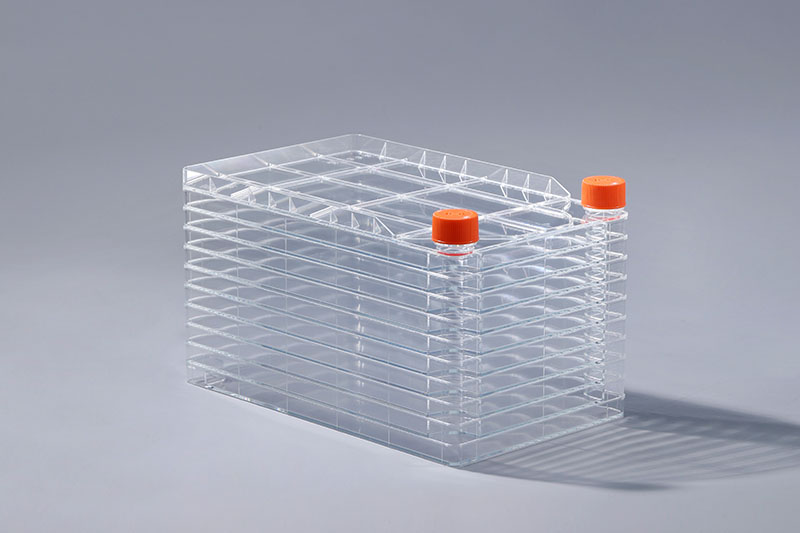렌티바이러스는 레트로바이러스의 일종인 인간면역결핍바이러스(HIV)를 변형한 바이러스 벡터의 일종이다. 렌티바이러스는 시험관 내 실험 및 생체 내 실험에서 외인성 유전자 또는 외인성 shRNA를 발현하기 위한 벡터 형태로 널리 사용되는 형태가 되었으며 점점 더 널리 사용되고 있다. 대량 생산에서 cell factory는 일반적으로 사용되는 세포 배양 소모품입니다.
Lentiviral 벡터는 외인성 유전자 또는 외인성 shRNA를 숙주 염색체에 효과적으로 통합하여 지속적으로 표적을 발현하는 효과를 얻을 수 있습니다. 시퀀스. 감염성 측면에서 신경 세포, 간세포, 심근 세포, 종양 세포, 내피 세포, 줄기 세포 및 기타 유형의 세포를 효과적으로 감염시켜 우수한 유전자 치료 효과를 얻을 수 있습니다. 일차 세포, 줄기 세포, 미분화 세포 등과 같이 일부 형질감염이 어려운 세포의 경우, 렌티바이러스 벡터를 사용하면 표적 유전자 또는 표적 shRNA의 형질도입 효율을 크게 향상시킬 수 있으며, 표적 유전자 또는 표적 shRNA는 숙주 세포에 통합됩니다. 게놈의 확률이 크게 증가하고 타겟 유전자 또는 타겟 shRNA의 장기적이고 안정적인 발현을 보다 편리하고 빠르게 실현할 수 있습니다.
세포 공장은 주로 렌티바이러스 벡터의 확장 생산에 적용됩니다. 세포 배양의 표면적을 증가시켜 벡터의 수율을 증가시키고, 형질감염 및 형질전환 후 배지 교체 횟수를 줄이고, 인건비를 절감할 수 있습니다. 효율적이고 편리한 세포 배양 소모품입니다.
lentiviral vector의 대규모 생산에 적용할 뿐만 아니라 세포 공장은 세포 치료제, 유전자 치료제, 종양 용해성 바이러스 치료제의 대규모 생산에 중요한 역할을 합니다. 및 백신.
The FAI climbed 5.9 percent year-on-year in the first 11 months of 2018, quickening from the 5.7-percent growth in Jan-Oct, the National Bureau of Statistics (NBS) said Friday in an online statement.
The key indicator of investment, dubbed a major growth driver, hit the bottom in August and has since started to rebound steadily.
In the face of emerging economic challenges home and abroad, China has stepped up efforts to stabilize investment, in particular rolling out measures to motivate private investors and channel funds into infrastructure.
Friday's data showed private investment, accounting for more than 60 percent of the total FAI, expanded by a brisk 8.7 percent.
NBS spokesperson Mao Shengyong said funds into weak economic links registered rapid increases as investment in environmental protection and agriculture jumped 42 percent and 12.5 percent respectively, much faster than the average.
In breakdown, investment in high-tech and equipment manufacturing remained vigorous with 16.1-percent and 11.6-percent increases respectively in the first 11 months. Infrastructure investment gained 3.7 percent, staying flat. Investment in property development rose 9.7 percent, also unchanged.
 English
English



















































